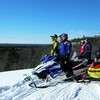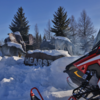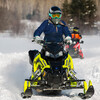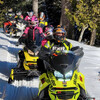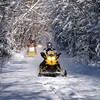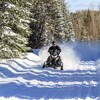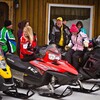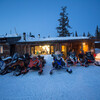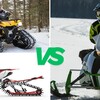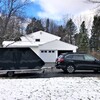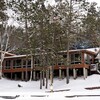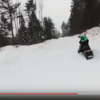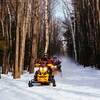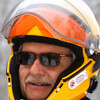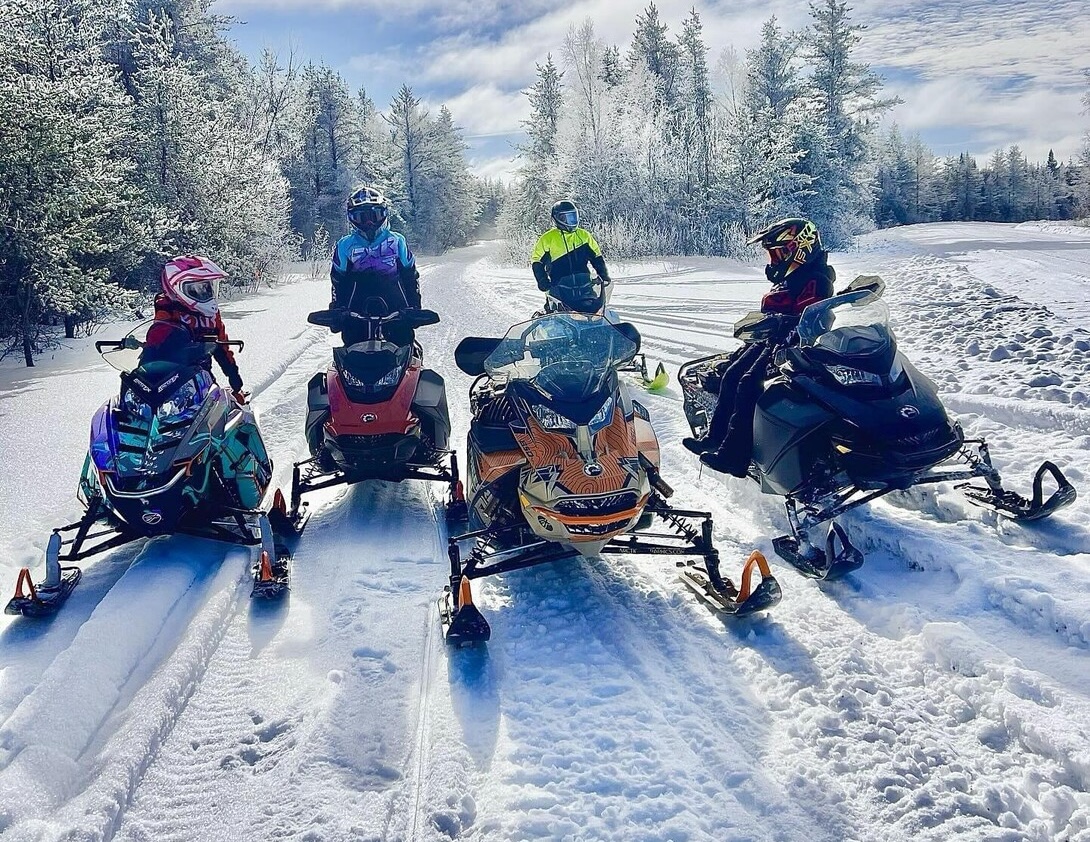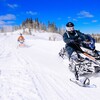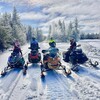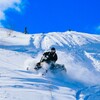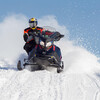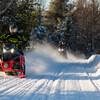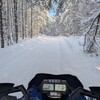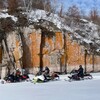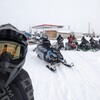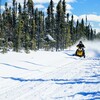
Snowmobiling Ontario's Farm Country


With over 30,000 kilometres of OFSC snowmobile trails to ride, Ontario offers plenty of variety and choice when it comes to snowmobiling. These options generally fall into three main categories: cottage country, wilderness forests, and farmlands. I’ll highlight each of these in my next couple of posts, starting with this one about farm country snowmobiling.
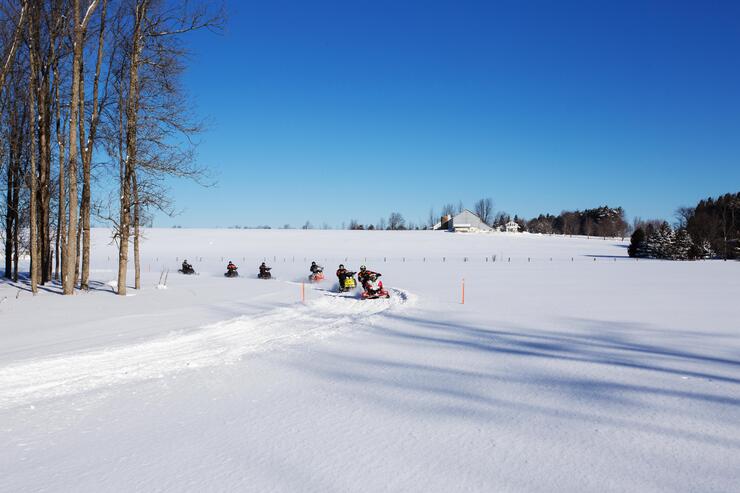
Ontario has about 13.3 million acres of farmland. With some exceptions, most of this agriculture is in the southern parts of the province. The two farm areas with the most snowmobile trails are Eastern Ontario and Western Ontario. Together, the regions described below provide over 9,000 kilometres of OFSC trails, almost a third of the provincial trail system. These trails are the closest place to ride if you live in the urban centres along the Highway 401 corridor or are coming to snowmobile in Ontario by way of Michigan or New York.
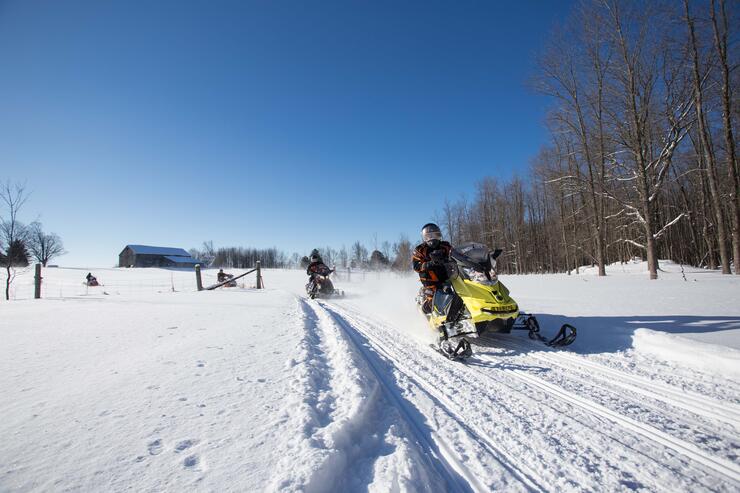
It’s worth noting that most of these snowmobile trails travel across private property. Generous landowners give local clubs permission to operate winter trails on their land for the exclusive use of snowmobiles. So, to maintain access to these trails and keep trail networks on farmland intact, it’s crucial that every rider stay on the marked trails at all times. Wandering off can result in permanent trail closures and broken links in the system.
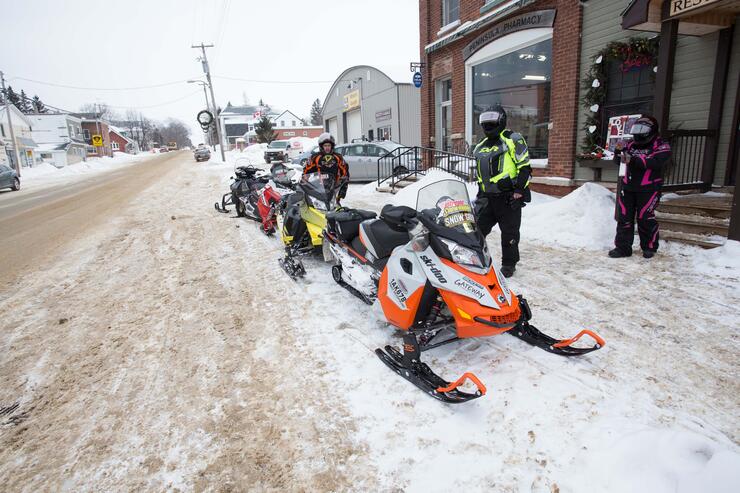
Photo: Martin Lortz
Are You Ready for the Country?
Why should you go snowmobiling in these specific areas of rural Ontario? With so many of us living in urban areas, discovering farm country is a really neat experience. It’s quite different from other Ontario riding choices. For starters, farm country is dotted with numerous rural villages connected by backcountry roads and snowmobile trails. These centres serve as local hubs for area farmers and welcoming stops for visiting snowmobilers. These villages are why there’s a higher density of club trails in these agricultural areas. And that means more trails to explore off the beaten path. It also means help is always nearby if needed. And that there’s always a road not far away to transport a sled away for emergency repair.

Another reason to snowmobile in Ontario farm country is that there’s a profound sensation of freedom to be found there. Instead of always being hemmed in on both sides by trees, as happens on endless forest trails, field trails provide unobstructed sightlines. You can see not only far ahead, but also a great distance to both sides. This enhanced visibility stimulates your curiosity and keeps your ride interesting.
What’s more, the trails travel along fence lines, through woodlots, down unopened road allowances, in sight of barns and livestock pens, and across the varied terrain between many fields and farms. Best of all, water crossings are few and far between in either of Eastern Ontario or Western Ontario. So snowmobilers don’t have to concern themselves with waiting for ice to freeze or crossing unfamiliar waterways.
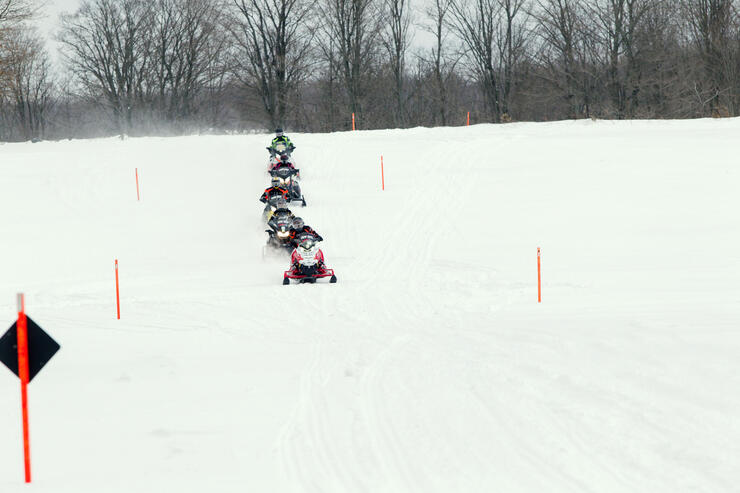
Photo: Martin Lortz
Finally, in keeping with their reputations for rural hospitality, both Eastern and Western Ontario provide many trailside warm-up shacks and clubhouses to break up your ride.
And, if you’re into counting trail stakes, you’ll be amazed to see that rural clubs use thousands of them to mark where the trail goes across every field. So, please ride between the stakes and don’t cut corners in farmer’s fields. It’s even more remarkable that every one of these orange sticks has to be installed by volunteers at the start of the season and removed at the end—over and over again, year after year!

Snowmobiling in eastern Ontario
The best farm country snowmobiling in Eastern Ontario occurs in the Upper Canada Snowmobile Region (UCSR). This region is bordered by the St. Lawrence River on its south side and the Ottawa River on its north. It’s located between Kingston and Arnprior on the west end and extends east to the Quebec boundary. The Upper Canada Snowmobile Region also borders New York State. This provides the first snowmobiling available to American riders crossing into Ontario at:
- Alexandria Bay, NY (Thousand Islands Bridge)
- Ogdensburg, NY (Ogdensburg-Prescott International Bridge)
- Massena, NY (Seaway Bridge)
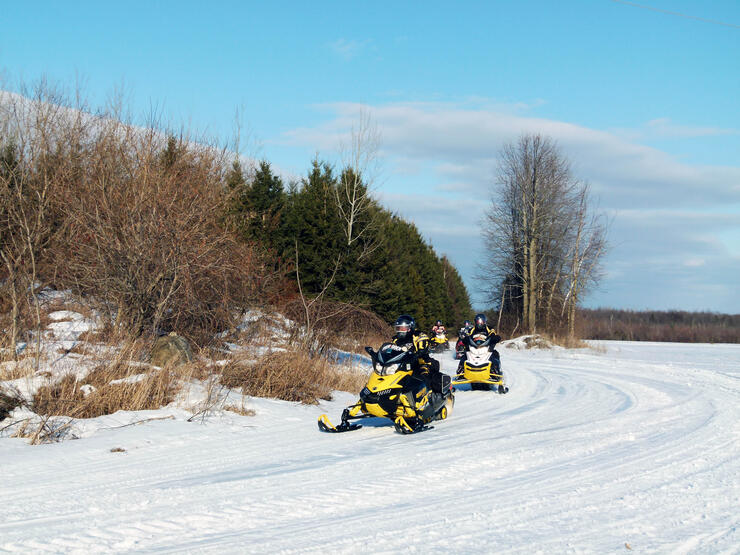
The UCSR operates over 3,000 kilometres of snowmobile trails. Their offerings also include three OFSC-promoted snow tours. They are the 298-kilomtere French Connection Loop, the 240-kilometre Rideau St. Lawrence Run, and the 266-kilometre Upper Canada Circuit. So there’s plenty of great riding to be had here, as you will discover in my tour article.
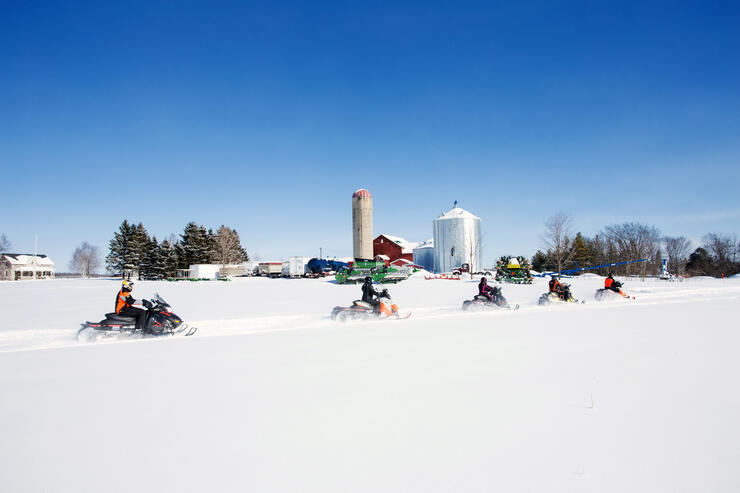
Snowmobiling in Western Ontario
The best farm country snowmobiling in Western Ontario occurs in two adjacent areas. The Midwestern Ontario Region extends north from Seaforth and Milverton along the shores of Lake Huron and Georgian Bay to Owen Sound and the Bruce Peninsula. It offers almost 3,000 kilometres of groomed trails.
The area usually benefits from reliable lake effect snow and include numerous club trails as we found out on a recent tour. Midwestern Ontario also offers five OFSC-promoted Snow Tours. They are the 263-kilometre Saugeen River Tour, the 185-kilometre Queen’s Bush Tour, the 142-kilometre Walter’s Falls Tour, the 215-kilometre Apres Harvest Tour, and the 177-kilometre Huron Gateway Tour.
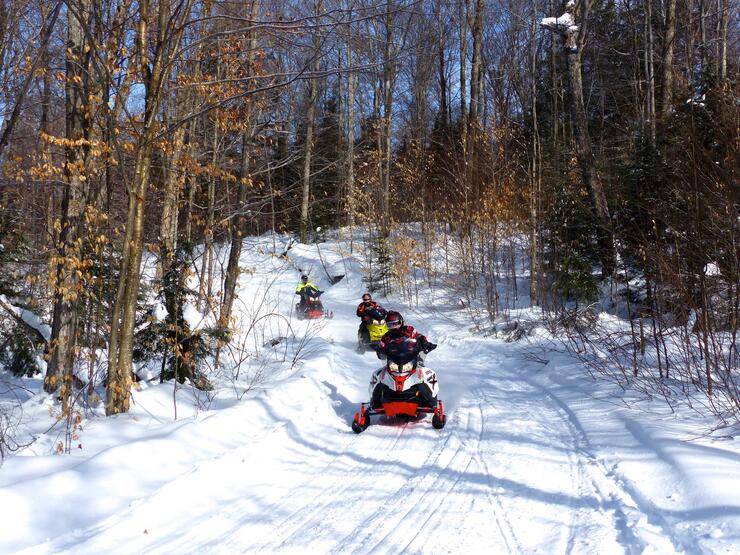
The region known as Southwestern Ontario is positioned south of Midwestern Ontario. It’s the most easily accessible from the Highway 401 corridor and cities like London and Kitchener-Waterloo. The area can also benefit from lake effect snow off its west side from Lake Huron and to the south from Lake Erie, but tends to have a shorter season.
When snow conditions are suitable, snowmobilers from Michigan and other nearby states will find Ontario’s closest riding opportunities in Southwestern Ontario after crossing the border at:
- Detroit. MI (Detroit-Windsor Tunnel)
- Detroit, MI (Ambassador Bridge)
- Port Huron, MI (Bluewater Bridge)
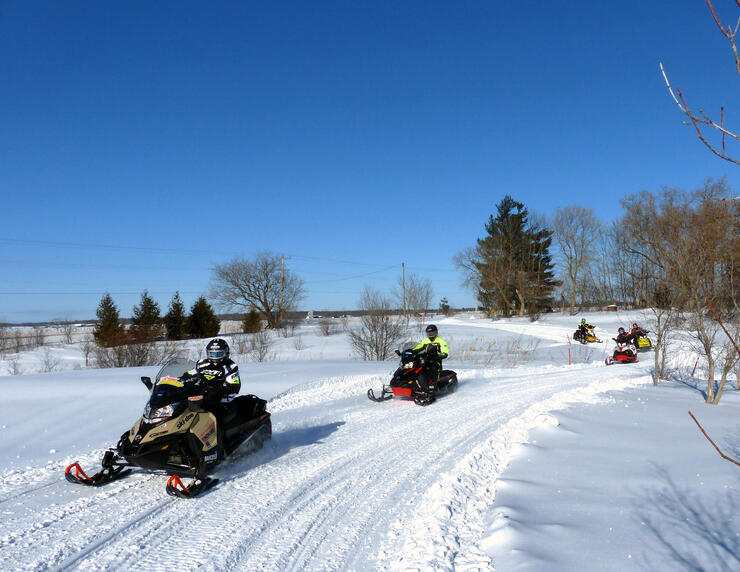
The Southwestern Ontario Region provides 3,150 kilometres of snowmobile trails and also offers four OFSC-promoted Snow Tours. They are the 420-kilometre 5 Alive Tour, the 108-kilometre South Coast Trail, the 160-kilometre Sun & Wind Tour, and the 150-kilometre TNT Tour.
So far, snowmobiling Ontario’s farm country doesn’t have the cachet of snowmobiling in cottage country or wilderness regions. Certainly, the riding season can be shorter in Eastern and Western Ontario. And yes, these are are more susceptible to weather changes. But that just means being a little more flexible in your plans and checking the forecast and OFSC Interactive Trail Guide before you go. Because, as I and many other snowmobilers can attest, some of our best riding experiences occurred on farm country trails. So why not give them a try this winter?
Recommended Articles

The Complete List of Snowmobile Events in Ontario 2025-2026
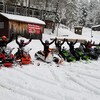
The Best Snowmobile-Friendly Lodges
Snowmobiling Winter Weather Forecast 2025-2026
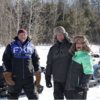
I Rode the Explorers Snow Tour in Ontario and Here’s What It Was Like

Why Ontario is One of the Best Snowmobile Destinations in the World
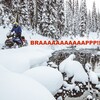
11 TikToks That Prove Ontario is the Best Place To Go Snowmobiling

5 Weekend Snowmobile Getaways Near the GTA
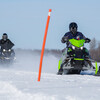
31 Ways To Get In The Know About Snowmobile Trail Riding in Ontario

A Beginner's Guide to Snowmobile Lingo

